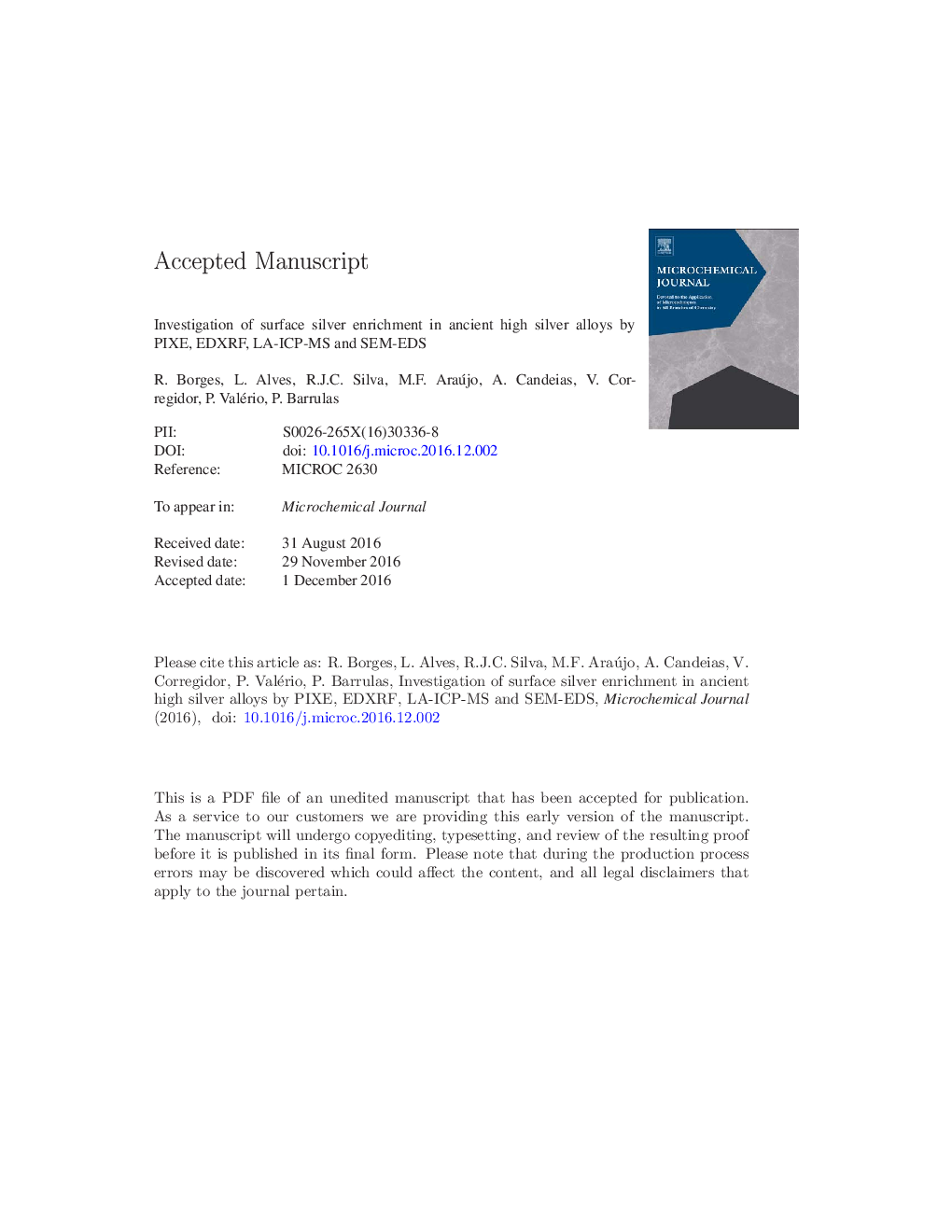| Article ID | Journal | Published Year | Pages | File Type |
|---|---|---|---|---|
| 5139262 | Microchemical Journal | 2017 | 42 Pages |
Abstract
Surface elemental analysis presenting high silver (Ag) contents have been regarded as reliable for original bulk composition of silver coins which are accordingly referred as being produced from very pure Ag alloys. Also, the extent in which the surface elemental composition analytical results are influenced by surface Ag enrichment has been disregarded in coins alloys with Ag finenesses greater than the Ag content indexed to the maximum value of copper (Cu) solid solubility in Ag - 91.2 wt.%. PIXE and EDXRF results obtained on Portuguese 11 dinheiros silver coins issued in the 16th century with a legal Ag fineness of 916.6 thousandths, show 4 to 7% higher Ag surface contents. As identified by LA-ICP-MS and μ-PIXE through coins thicknesses, the overestimation of the superficial measured Ag is associated to a Cu depletion gradient representing as much as 50% less Cu on surface than on the bulk of the coins. The subsurface microstructural characterization by SEM-EDS reveals the presence of an important superficial layer depleted of Cu-phase, with a thickness < 70 μm, resulting primarily from intergranular corrosion during the coin manufacturing process. These layers can only be accessed by destructive or invasive analysis, as thicknesses beyond the information emission depth obtained with EDXRF could not be identified by Ag Kα/Lα ratios. As showed by the combination of different methods of analysis, EDXRF, PIXE, SEM-EDS and LA-ICP-MS, the results obtained by surface analytical techniques may differ from the original bulk compositions for these high Ag content coins and should be taken cautiousness together with historical context and information.
Related Topics
Physical Sciences and Engineering
Chemistry
Analytical Chemistry
Authors
R. Borges, L. Alves, R.J.C. Silva, M.F. Araújo, A. Candeias, V. Corregidor, P. Valério, P. Barrulas,
